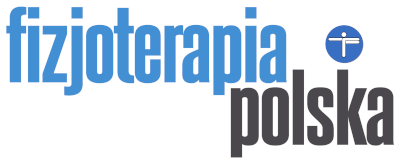Kinesitherapy in the treatment of juvenile thoracic kyphosis (Scheuermann’s Disease)
Anna Krawczyńska, Piotr Majcher, Marek Fatyga, Andrzej Skwarcz
Anna Krawczyńska, Piotr Majcher, Marek Fatyga, Andrzej Skwarcz – Kinesitherapy in the treatment of juvenile thoracic kyphosis (Scheuermann’s Disease). Fizjoterapia Polska 2001; 1(3); 303-305
The course of juvenile thoracic kyphosis, known as Scheuermann’s Diseases, brings about static and dynamic changes within the spine, the shoulder girdle, and the pelvic girdle, negatively affecting the patient’s posture. Changes in the spine due to growth deformities in the vertebral bodies lead to musculo-capsular spasms and adynamia in overextended muscles and ligaments.The basic aim of kinesitherapeutic procedures in the treatment of juvenile thoracic kyphosis is to restore normal muscular equilibrium by stretching the contracted muscles and strengthening the weakened ones. There are also exercises intended to improve the range of joint movement and to teach the patient to assume and maintain proper body posture. In cases of radiologically confirmed growth disorders affecting the vertebral bodies, treatment by extending corrective braces is required. In such cases kinesitherapy and physicotherapy are intended to prepare the patient to obtain good correction in the orthopedic brace and reduce the so-called “plaster losses”. The authors point out the value of kinesitherapy in the process of treating patients with juvenile thoracic kyphosis. A program of exercises intended to reconstruct a normal is also discussed.
| Invalid download ID. | Pobierz bezpłatnie artykuł w j. angielskim |

